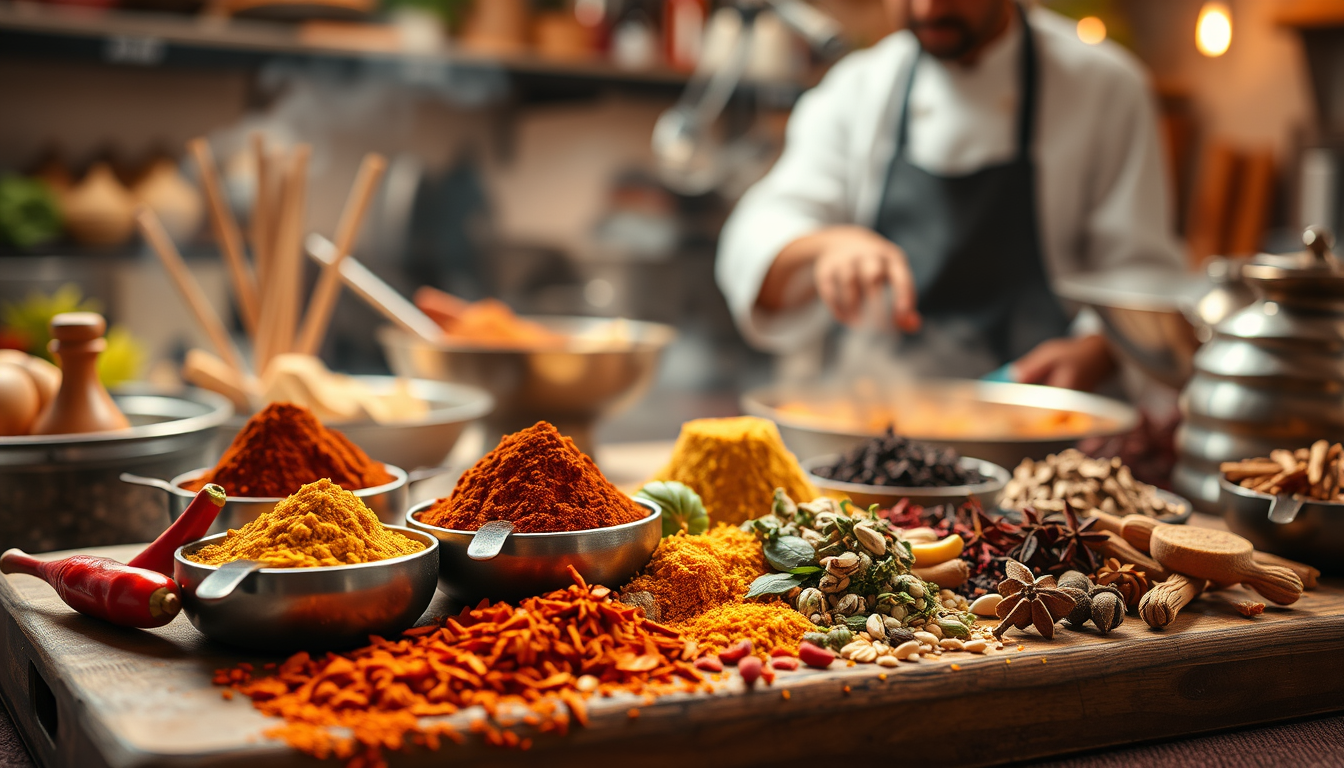Indian cuisine is renowned worldwide for its vibrant flavors, rich textures, and, of course, its spiciness. The spiciness in Indian food is not just a result of the use of chili peppers, but a complex interplay of various spices and cooking techniques. This article delves into the various factors that contribute to the spiciness of Indian food, providing a comprehensive understanding of this unique culinary aspect.
The Role of Chili Peppers
Chili peppers are a staple in Indian cooking and are responsible for a significant portion of the spiciness. The most commonly used chili peppers in India include:
– Green Chili Peppers: These are often used in dishes like green chutney and pickles.
– Red Chili Peppers: These are used in a variety of dishes, including curries and stews.
– Dried Chili Peppers: These are often ground into a powder and used as a spice.
The heat level of chili peppers is measured using the Scoville scale, which ranges from 0 to over 1 million units. In Indian cuisine, chili peppers with varying levels of heat are used to cater to different preferences.
Spices That Add Heat
In addition to chili peppers, several other spices contribute to the spiciness of Indian food. These include:
– Turmeric: While not spicy, turmeric has a unique flavor that complements the heat from other spices.
– Cumin: This spice has a warm, earthy flavor and adds a subtle heat to dishes.
– Coriander: Both fresh and dried coriander seeds are used in Indian cooking and contribute to the overall flavor profile.
– Mustard Seeds: These are often used in tempering and add a pungent heat to dishes.
– Fenugreek: This spice has a slightly bitter and sweet flavor and adds a unique heat to curries.
– Asafoetida: Known for its strong, pungent smell and flavor, asafoetida is used in small quantities to add depth and heat to dishes.
Cooking Techniques
The cooking techniques used in Indian cuisine also play a significant role in determining the spiciness of a dish. Some of the key techniques include:
– Tempering: This involves heating spices in hot oil to release their flavors and aromas. The heat from the oil helps to intensify the spiciness of the dish.
– Marination: Many Indian dishes involve marinating ingredients in a mixture of spices and yogurt. This helps to infuse the flavors and heat into the food.
– Slow Cooking: Some dishes, like curries, are cooked slowly over low heat. This allows the flavors and heat to meld together, resulting in a more intense spiciness.
Regional Variations
The spiciness of Indian food can vary significantly depending on the region. Some of the most spicy regions in India include:
– Kashmir: Known for its mild and aromatic dishes, Kashmir is not typically associated with spicy food.
– Punjab: This region is famous for its rich and flavorful curries, which often include a good amount of heat.
– Andhra Pradesh: Andhra Pradesh is renowned for its spicy dishes, with the state’s capital, Hyderabad, being particularly famous for its spicy biryani and other curries.
– Tamil Nadu: This region is known for its spicy and tangy dishes, with a particular focus on coconut-based curries.
– Kerala: Kerala is famous for its seafood and coconut-based dishes, which often have a mild to medium heat level.
Cultural Significance
The spiciness of Indian food is not just a culinary preference but also has cultural significance. In many parts of India, spicy food is considered a symbol of hospitality and generosity. It is often served to guests as a sign of respect and friendship. Additionally, the use of spices in Indian cooking is deeply rooted in the country’s history and traditions.
Health Benefits
The spiciness in Indian food also has several health benefits. Chili peppers, for example, are known for their ability to boost metabolism and aid in digestion. Other spices used in Indian cooking, such as turmeric and cumin, have anti-inflammatory and antioxidant properties. Furthermore, the use of a variety of spices in Indian cuisine helps to reduce the risk of chronic diseases like heart disease and diabetes.
Conclusion
The spiciness of Indian food is a result of a complex interplay of chili peppers, other spices, and cooking techniques. The heat level can vary significantly depending on the region and personal preference. Despite its spiciness, Indian food is beloved worldwide for its rich flavors, textures, and cultural significance. Whether you are a fan of mild or spicy food, there is something for everyone in the vast and diverse world of Indian cuisine.
FAQs
What is the Scoville scale?
The Scoville scale is a measurement of the pungency (spicy heat) of chili peppers or other spicy foods. It ranges from 0 to over 1 million units.
Why is asafoetida used in Indian cooking?
Asafoetida is used in small quantities in Indian cooking to add depth and heat to dishes. It has a strong, pungent smell and flavor but is often used sparingly to avoid overpowering other flavors.
How does marination contribute to the spiciness of a dish?
Marination involves infusing ingredients with a mixture of spices and yogurt. This helps to infuse the flavors and heat into the food, making it more spicy.
What are some of the most spicy regions in India?
Some of the most spicy regions in India include Andhra Pradesh, Tamil Nadu, and Kerala.
What are the health benefits of the spices used in Indian cooking?
The spices used in Indian cooking have several health benefits, including boosting metabolism, aiding digestion, and reducing the risk of chronic diseases.
